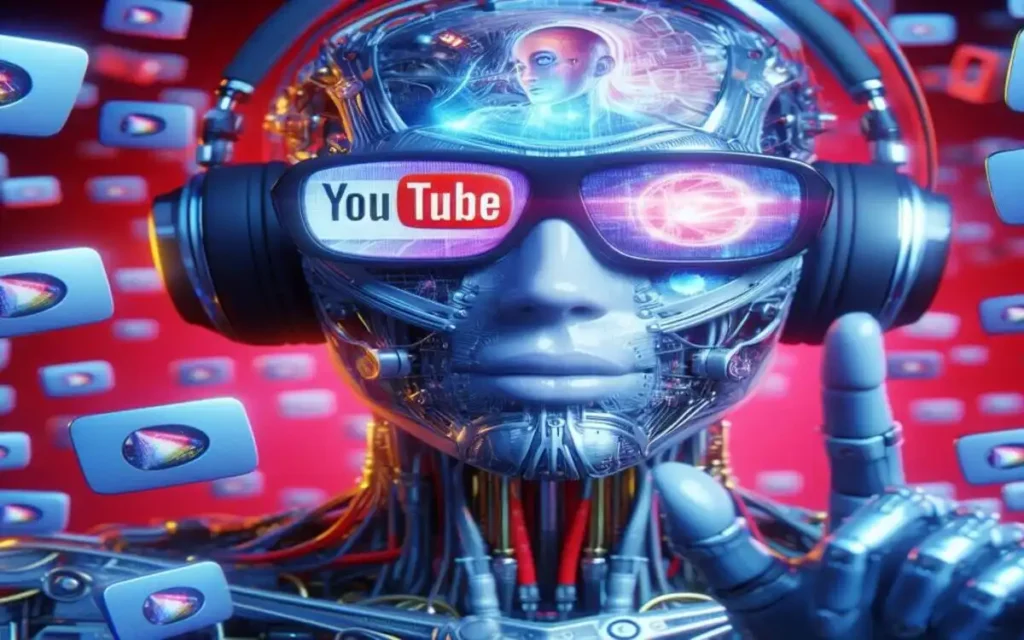A Comprehensive Guide to Monetize YouTube Shorts through AI Automation
Introduction
Welcome to the future of YouTube content creation – the era of Faceless YouTube Shorts powered by AI automation. In recent times, the landscape of online video content has evolved significantly, and in this blog post, we’ll uncover the secrets to creating a monetizable faceless YouTube channel that stands out. By leveraging the power of artificial intelligence, you can not only streamline your content creation process but also enhance viewer engagement and, subsequently, monetization.
Understanding the Landscape of YouTube Shorts
How Long are YouTube Shorts?
YouTube Shorts, has become a game-changer in content creation. These bite-sized videos, often lasting less than a minute, provide a unique opportunity for creators to capture the audience’s attention quickly. With YouTube actively promoting Shorts and offering monetization possibilities, the landscape is ripe for innovative approaches, including the rise of faceless YouTube channels.
Faceless YouTube channels, where creators remain anonymous or use avatars, have gained popularity due to their versatility and ability to focus purely on content. As we delve into this guide, we’ll explore how this format, when combined with AI automation, can lead to a lucrative YouTube venture.
Pitfalls of Repetitive Content
While the initial success of fact-based shorts, particularly in the psychology niche, was undeniable, the market quickly became saturated. Creators flocked to this content idea, leading to a loss of uniqueness and diminished results for newcomers.
The solution? Embrace creativity and explore new avenues for content creation!
This is where the power of AI comes into play. By using advanced AI tools like ChatGPT, creators can generate diverse and engaging content that goes beyond the typical fact-based shorts. Our case study, the Quiz Monster YouTube channel, serves as a testament to the success of adopting a unique approach with quiz and riddle videos.
Leveraging AI for Faceless YouTube Shorts on PC

Make YouTube Shorts on PC using ChatGPT & Canva
ChatGPT, an advanced language model, and Canva, a versatile design tool, form the dynamic duo for our faceless YouTube Shorts on PC strategy. ChatGPT aids in generating engaging riddles and content prompts, while Canva serves as the canvas for visually appealing and animated short videos.
Advantages of AI–Generated Content
- Efficiency: AI allows for the rapid creation of content, saving time and effort.
- Variety: AI can produce diverse content, reducing the risk of repetition.
- Consistency: With AI, maintaining a consistent posting schedule becomes more manageable.
Stay tuned as we dive deeper into the step-by-step guide for creating compelling riddles using ChatGPT and transforming them into captivating Faceless YouTube Shorts with Canva.
Case Study: Successful Quiz and Riddle Channel
Let’s take a closer look at the Quiz Monster YouTube channel, a prime example of a successful faceless YouTube channel. Specializing in quiz and riddle videos, Quiz Monster has mastered the art of keeping viewers engaged and curious, leading to millions of views.
The channel’s success lies in its ability to leverage the interactive nature of quiz and riddle content. Engaging the audience in problem-solving boosts watch time and elevates the level of interaction, as evidenced by the vibrant comments section. Importantly, Quiz Monster is monetized, earning around $60,000 annually according to Social Blade.
Now how can you replicate, and even surpass, this success by creating your own faceless YouTube channel using AI automation?
Step-by-Step Guide: Create Riddles with ChatGPT
A. Setting Up ChatGPT for Riddle Creation
To get your faceless YouTube Shorts Party started, setting up ChatGPT for riddle creation is the first crucial step. Utilizing ChatGPT’s capabilities requires crafting effective prompts. Let’s initiate the process:
- General ChatGPT Tips:
-
-
- provide clear and specific instruction: When you articulate your request with precision, it helps ChatGPT understand your needs better and generate more accurate and relevant responses. Clarity in your prompts can lead to more focused and insightful results.
- Specify the Desired Depth: Communicate whether you want a brief overview or a detailed explanation. For instance, you can say, “Provide a concise summary of…” or “Delve into the details regarding…”
- Encourage Divergent Thinking: If you’re looking for creative or alternative ideas, explicitly express that you welcome diverse perspectives. You might say, “Explore unconventional solutions for…” or “Suggest innovative approaches to…”
- Refine Responses Gradually: If an initial response isn’t quite what you’re looking for, consider refining your request in subsequent prompts. Gradually narrow down or adjust your query based on the model’s previous answers to steer it in the right direction.
- Use Examples to Clarify: Supplement your prompts with examples to illustrate your expectations. For instance, “Similar to how [example] works, explain the process of…” This helps in providing a clearer understanding of the context you have in mind.
-
- Crafting Riddle Prompts: Use specific prompts to guide ChatGPT in generating intriguing riddles. Provide clear instructions for the desired format.
"As a renowned riddles expert, your task is to create five quick and interesting riddles for your audience to solve. Each riddle should have three options with only one correct answer. Please follow the table format provided below to present your riddles."
B. Compiling a Collection of Riddles
After initiating ChatGPT, you’ll receive responses in batches. The tool may have limitations on the number of riddles it generates at once, so be prepared to iterate the process.
- Generating 300 Riddles:
Ask ChatGPT to generate 300 riddles for a robust collection. You can do this in batches of 10, and it’s advisable to keep requesting until you have the desired quantity
E.g.,
generate 300 riddles, 10 at a time, start with the first 10 riddles and i will tell you when to move on - Organizing in Google Sheets:
Import the generated riddles into a Google Sheet. Organize them neatly for easy access and future use.
Now that you have a treasure trove of riddles, we’ll move on to transforming them into engaging YouTube Shorts using Canva. exploring the visual aspect of your faceless YouTube channel.
Create Youtube Shorts With Canva
A. Demonstration of Canva for Background and Text Elements
Canva, an intuitive design platform, plays a pivotal role in bringing your riddles to life through YouTube Shorts. Let’s start creating visually appealing content
- Access Canva:
- Visit Canva and sign in to your account or create a new one if you haven’t already.
- Choosing Background:
- Click on the ‘Elements’ tab in Canva and search for a background video that aligns with the theme of your riddles. Select one that adds visual appeal to your shorts.
- Adding Riddle Text:
- Copy the text from your Google Sheet, representing the riddle, and paste it onto the Canva template. Adjust the text size for visibility.
B. Enhancing Visuals and Engagement
Canva offers a range of features to enhance your YouTube Shorts’ visual appeal and engagement:
- Text Background:
- To enhance text visibility, add a text background. Select a square shape, adjust its size, and choose a contrasting color. You can add a black overlay with reduced opacity for a polished look.
- Animation for Engagement:
- Explore Canva‘s animation options to add motion to your elements. Animations keep viewers engaged and add dynamism to your shorts.
- Timing Control:
- Right-click on text layers and access ‘Show Timing‘ in Canva. This allows precise control over when elements appear or fade out. Implement this strategically for a seamless viewer experience.
Now that you’ve visually crafted your riddles, let’s move on to automating the video creation process for multiple shorts using Canva‘s Bulk Create Tool.
Automation with Canva Bulk Create Tool

A. Overview of Canva’s Bulk Create Tool
Canva’s Bulk Create Tool is a game-changer, offering efficiency and scalability in video production. Let’s explore how this tool streamlines the process:
- Accessing the Tool:
- In Canva, navigate to the ‘Apps‘ section and search for ‘Bulk Create.’ This tool significantly simplifies the creation of multiple videos simultaneously.
- Entering Data Manually:
- Choose ‘Enter Data Manually‘ to input your riddle data directly. This step is crucial for connecting data points to specific elements in your shorts.
B. Connecting Data Points for Automated Video Generation
- Clearing the Table:
- Click on ‘Clear Table‘ to start with a fresh slate. This ensures that your data doesn’t overlap with existing entries.
- Copying Data from Google Sheets:
- Go back to your Google Sheets document and copy 20~40 rows, including titles. Paste this data into Canva‘s Bulk Create Tool.
- Connecting Data Points:
- Right-click on each data point (e.g., title, body, options) and select the corresponding element in your Canva template. This step is crucial for automation.
- Continuing and Generating:
- Click ‘Continue‘ and then hit ‘Generate.’ Watch as Canva’s magic unfolds, turning your data into a series of shorts in a matter of seconds.
C. Customizing Visuals for Batches
To avoid monotony and repetition, customize visuals for each batch:
- Making Visual Changes:
- Go back to your Canva template and make slight alterations to the background, colors, or animations for the next batch.
- Repeating the Process:
- Repeat the Bulk Create process with the new visual settings, ensuring a varied and engaging series of YouTube Shorts.
With your shorts ready for download, we move on to the crucial steps of setting up your faceless YouTube channel and optimizing it for maximum visibility and monetization.
Setting Up Your Faceless YouTube Channel
Creating a faceless YouTube channel is a pivotal step in bringing your AI-generated shorts to the digital stage. Let’s walk through the essential components to ensure a smooth setup:
A. Brief Instructions on Creating a YouTube Channel
- Navigate to YouTube:
- Visit YouTube and sign in with your Google account. If you don’t have one, create a new account.
- Access YouTube Studio:
- Once logged in, click on your profile picture and select “YouTube Studio.” This is your command center for managing your channel.
- Channel Setup:
- Follow the on-screen prompts to set up your channel. Choose a unique and descriptive name, and consider using keywords related to your content.
B. Tips for Optimizing Channel Settings
- Customize Your Channel Art:
- Design a visually appealing channel banner that reflects the theme of your shorts. Canva can be a handy tool for creating striking channel art.
- Craft a Channel Description:
- Write a concise and compelling channel description. Convey what viewers can expect and why they should subscribe.
- Create Playlists:
- Organize your shorts into playlists based on themes or categories. Playlists enhance viewer experience and increase watch time.
C. Importance of Consistency and Branding
- Consistent Posting Schedule:
- Establish a consistent posting schedule for your shorts. Regular uploads help build an audience and keep viewers engaged.
- Branding Elements:
- Incorporate consistent branding elements across your channel, including logo, colors, and intros. This fosters brand recognition and professionalism.
Now your faceless YouTube channel is set up, we move on to the critical elements of crafting compelling titles, descriptions, and tags for your AI-generated shorts.
Crafting Titles, Descriptions, and Tags with AI
A. Using ChatGPT to Generate Optimized Titles, Descriptions, and Tags
Optimizing titles, descriptions, and tags is vital for visibility and searchability. Let’s leverage AI, specifically ChatGPT, to effortlessly generate compelling metadata:
- Titles for Click-Worthy Shorts:
- Request ChatGPT to generate catchy and click-worthy titles for your shorts. Ensure they are intriguing and include relevant keywords.
"Generate attention-grabbing titles for your YouTube shorts with ChatGPT. Focus on curiosity and keyword inclusion."
- Request ChatGPT to generate catchy and click-worthy titles for your shorts. Ensure they are intriguing and include relevant keywords.
- Crafting Descriptions:
- Ask ChatGPT to create concise yet informative descriptions for your shorts. Describe the content, encourage engagement, and include relevant hashtags.
"Instruct ChatGPT to compose engaging and informative descriptions for your shorts. Encourage likes, comments, and subscriptions."
- Ask ChatGPT to create concise yet informative descriptions for your shorts. Describe the content, encourage engagement, and include relevant hashtags.
- Optimizing Tags:
- Utilize ChatGPT’s capabilities to generate a set of relevant tags for each short. Ensure these tags encompass keywords related to your content.
"Optimize your video's discoverability by instructing ChatGPT to generate relevant tags. Include variations and related keywords for broader reach."
- Utilize ChatGPT’s capabilities to generate a set of relevant tags for each short. Ensure these tags encompass keywords related to your content.
B. Importance of Keyword Research for YouTube SEO
- Understanding YouTube SEO:
- Dive into the basics of YouTube SEO. Explore how titles, descriptions, and tags impact your video’s visibility in search results and recommendations.
- Conducting Keyword Research:
- Strategic Placement of Keywords:
- Strategically place primary and secondary keywords in titles, descriptions, and tags. This enhances your video’s chances of appearing in search results.
Now armed with optimized metadata, your shorts are poised for maximum reach. In the next section, we’ll guide you through the process of uploading your shorts and initiating the monetization journey.
Upload YouTube shorts and Monetization
Congratulations on reaching the pivotal stage of uploading your faceless YouTube Shorts and embarking on the monetization phase. Let’s navigate the process step by step:
A. How to Upload YouTube Shorts
- Access YouTube Studio:
- Head to YouTube Studio and click on the ‘+‘ icon to create a new video.
- Upload Your Short:
- Drag and drop or select your AI-generated YouTube Short. YouTube now supports Shorts, allowing for easy uploading.
- Fill in Video Details:
- Copy and paste the optimized title, description, and tags generated by ChatGPT. Ensure all relevant information is filled in accurately.
B. Monetization Options for YouTube Shorts
- Verify Your Channel:
- To unlock monetization, ensure your channel is eligible. This includes meeting YouTube’s criteria and completing the verification process.
- Enable Monetization:
- In YouTube Studio, navigate to ‘Monetization‘ and follow the steps to enable monetization. This may involve setting up an AdSense account.
- Understand YouTube Shorts Monetization:
- Familiarize yourself with how YouTube monetizes Shorts. This may include ads, channel memberships, and other revenue streams.
Now let’s explore how to analyze the performance of your shorts and share insights with your audience.
Results and Analytics
As your faceless YouTube Shorts start to gain traction, it’s crucial to monitor their performance and analyze the results. Let’s delve into the tools and strategies you can employ to assess the success of your shorts:
A. Monitoring Performance Metrics
- YouTube Analytics:
- Regularly check YouTube Analytics to track key metrics such as views, watch time, and engagement. This data provides insights into your audience’s behavior.
- Click-Through Rate (CTR):
- Assess the CTR of your shorts. A higher CTR indicates that your titles and thumbnails are compelling, driving viewers to click on your content.
B. Tips for Improving Engagement and Click-Through Rates (CTR)
- Iterate Based on Analytics:
- Use insights from YouTube Analytics to refine your content strategy. Identify which shorts perform well and analyze what elements contribute to their success.
- Engage with Your Audience:
- Respond to comments and engage with your audience. Building a community fosters loyalty and encourages viewers to return for more shorts.
C. Sharing Insights and Analytics with the Audience
- Community Tab:
- Utilize the Community tab on your YouTube channel to share updates, insights, and behind-the-scenes information with your audience.
- Twitter and Other Platforms:
- Leverage social media platforms, especially Twitter, to share analytics and milestones. This can create anticipation and excitement among your audience.
By keeping a close eye on analytics and engaging with your audience, you’re not only refining your content strategy but also fostering a dedicated community around your faceless YouTube channel.
Now we’ll wrap this up and provide additional resources for further exploration.
Conclusion and Further Exploration
Congratulations on completing this comprehensive guide to making faceless YouTube Shorts and unlocking the potential for a monetizable channel through AI automation.
Let’s recap the key takeaways and provide resources for further exploration:
A. Key Takeaways
- Diversify Content Creatively:
- Avoid market saturation by exploring new content ideas. AI, specifically ChatGPT and Canva, can be powerful tools in creating diverse and engaging shorts.
- Leverage Successful Case Studies:
- The Quiz Monster YouTube channel serves as a successful case study, showcasing the effectiveness of quiz and riddle videos in driving engagement and monetization.
- Optimize Metadata with AI:
- Use ChatGPT to generate optimized titles, descriptions, and tags. Incorporate strategic keywords to enhance your shorts’ discoverability.
- Monetization Strategies:
- Enable monetization on your channel by meeting YouTube’s criteria. Explore various revenue streams, including ads and channel memberships.
B. Further Exploration
- AI Tools for Content Creation:
- Explore additional AI tools beyond ChatGPT and Canva. Platforms like fliki.ai offer AI-generated voiceovers, adding another dimension to your content.
- YouTube Growth Tools:
- Enhance your channel’s growth with tools like vidIQ, which aids in keyword research and provides insights for optimizing your content.
- Stay Updated on YouTube Trends:
- Regularly check YouTube’s official blog and our website to stay informed about emerging trends and features.
As you embark on your YouTube journey, remember that consistency, innovation, and audience engagement are keys to long-term success.
Feel free to experiment with new ideas, iterate based on analytics, and most importantly, enjoy the creative process!
Thank you for joining us on this journey to unlock the secrets of faceless YouTube Shorts. If you have any questions or want to share your experiences, feel free to leave us a comment! until next time, Stay Savvy!


Thank you i made it like you ask me